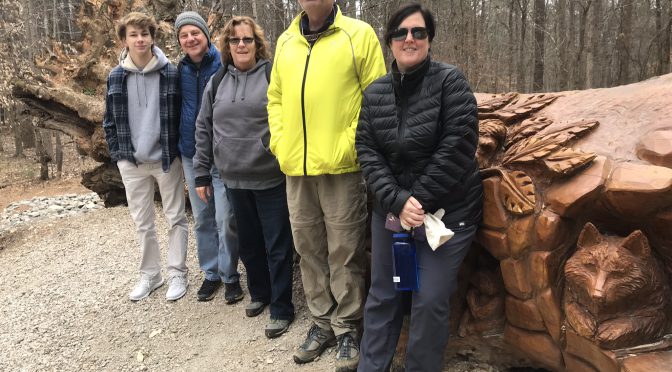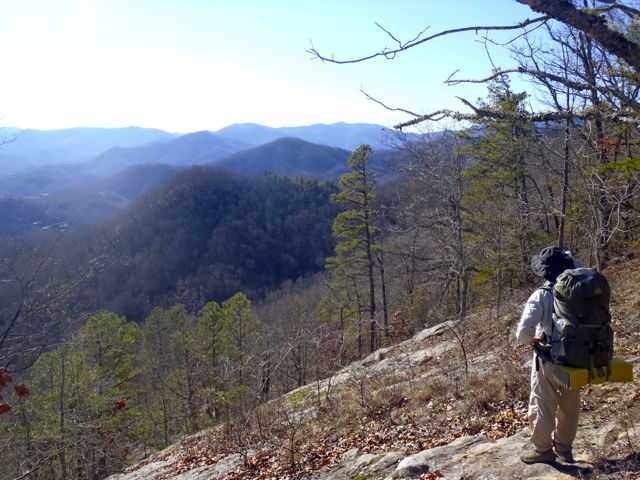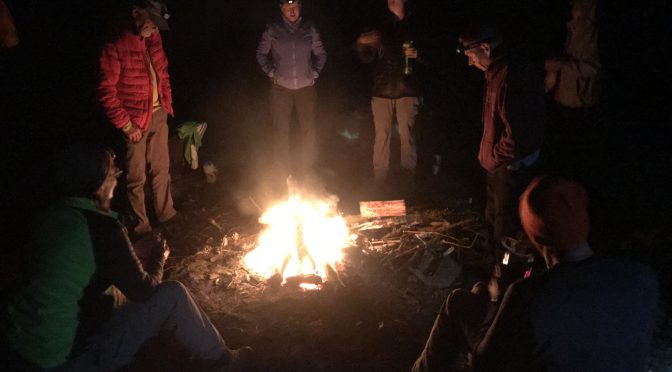The first time I went on a solo backpacking trip, I didn’t.
It was back in the 1990s, I’d been backpacking with friends for about 5 years, and convinced myself I should take a solo backpack trip. I felt good about my basic backpacking skills, I loved hiking alone … still, there was this worrisome doubt.
I’d selected a spot for that first trip that I was only vaguely familiar with at the time, Panthertown Valley. I’d hiked there, but never done an overnight. It was also a long drive: even ducking out of work early around 2, I still wouldn’t arrive until 7:30, leaving precious little daylight to hike in (on a trail I didn’t know), find a spot (assuming there was one) and set up camp. It was a plan that left no room for the unexpected. Like a visit from a wayward turkey.
Heading into Asheville on I-40 in late afternoon, my road reverie was broken by something dark rising from off the shoulder. Suddenly, the head of a turkey appeared out the front windshield, its vacant look suggesting that it, too, was lost in some far-off world. Just as suddenly, the rear back window exploded, the Trooper bucked, and in the rear-view mirror I could see the lifeless bird butter-balling down the shoulder. When I pulled into an auto glass repair shop 20 minutes later and presented my dilemma to the five workers waiting for the 5 o’clock whistle, no one said a word. Rather, they walked single file out to the car, where one of them plucked a feather from the backseat and declared, “He’s right.”
I wound up getting to the trailhead in the dark. I could see the trailhead kiosk, and I could see a yellow sign just beyond that proclaimed, “Bear Sanctuary.” What exactly does that mean? Long story short, I checked into a motel. It would be another couple of years before I took my first solo backpack trip.
Good thing, too, because as I later discovered, I was woefully unprepared for my first solo venture. Among my mistakes:
Picking an area I didn’t know well for my first foray.
Allowing zero cushion in my schedule to arrive at camp and set up before sunset.
Not having a good map of the area (which might have shown campsites closer than the one I was contemplating two miles in).
Not triple checking my gear before heading out to make sure I wasn’t missing anything important. (Like my water filter.)
Not making a practice run setting up camp in the dark.
Not knowing what exactly a bear sanctuary was. (They’re areas where bear hunting is banned to elevate the bear population.)
read more



